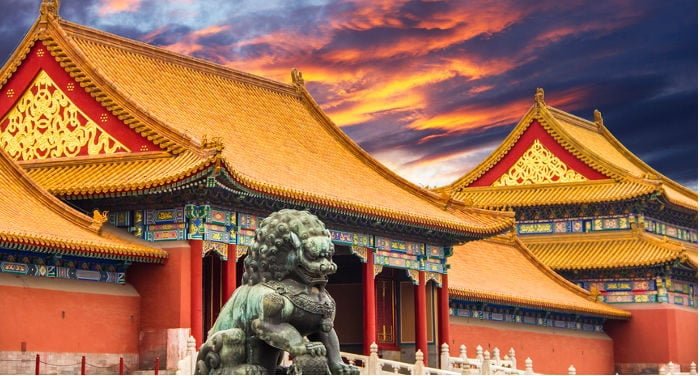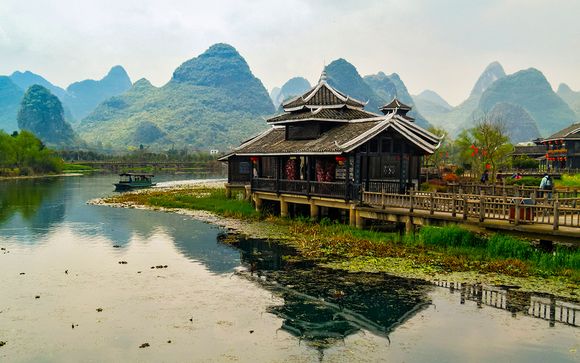20 Best Ways To From Street Food to Fine Dining in China
20 Best Ways To From Street Food to Fine Dining in China
Blog Article
Top 10 Tips For Street Food Safety In China
1. Tip: Pick vendors that are busyTip - Look for vendors that have long lines and a high turnover rate because they are likely to utilize fresh ingredients.
Pro High turnover suggests freshness, and is popular among locals.
Cons The wait at the cash register can be time consuming.
2. Observe Hygiene Practices
Beware of food handling with bare hands by vendors.
Pro: Reduces the risk for food-borne illnesses.
Cons: High hygiene standards might limit your choices.
3. Avoid Uncooked Foods
Beware of eating raw foods like raw fruits and vegetables, raw meats and eggs that are raw.
Pro: Cooked foods are less likely to cause food poisoning.
Cons: You're restricted in what you can choose from, because some raw foods like sushi and cold salads may be tempting.
4. Inspect Ingredients
Tips: Examine the appearance and scent of the food. Fresh ingredients should be brightly colored and smell delicious.
Pro: It is a good idea to avoid spoiled or inferior ingredients.
Cons: It can be difficult to determine the freshness of food, if one does not have experience.
5. Be sure to get Boiled or Bottled drinks
Tips: Use bottled water, canned drinks or tea brewed with boiling water to stay away from dangerous tap water.
Pro: Guards you against waterborne illnesses.
Con: The limited choice of drinks available, especially from street stalls.
6. Start Small
Tip: Begin with a small amount of a food you've never tried before to test how you react.
Benefits: Reduces risk of serious digestive problems.
Cons: May not be able to satisfy your appetite If the food turns out to be delicious and safe.
7. Do not drink ice.
It is advised to stay clear of using ice because it may have been manufactured using tap water.
Pro: Protects your water from contaminants.
Cons: Your drinks could be less refreshing in hot temperatures.
8. Look for Freshly Cooked Items
Tip Choose food that you can see being prepared in front of your eyes.
Pro: Reduces risk of contamination from long exposure.
Pro: Some street food items that are prepared in advance may be difficult to avoid or delicious.
9. Carry hand Sanitizer
Use dry or wet wipes or hand sanitizer prior to eating If you don't have the facility to wash your hands.
Pro: It lowers the risk of spreading germs to food.
Cons: It is difficult to transport additional items.
10. Trust your Instincts
If you smell or see something that isn't or smell right, you should avoid eating it.
Pro: You can avoid food items that can cause illness.
Con: Can lead to over-caution, which could cause you to miss the real-world experiences.
The Benefits of eating Street Food in China
Affordable and Delicious Street food is typically inexpensive and full of authentic flavors.
The convenience of vendors is that they are all over the place, making it simple to grab an easy meal or snack.
Cultural Experience: Dining at street stalls immerses you in local food culture and traditions.
There are numerous options to choose from that range from Jianbing, (savory crepes), to Chuan'r, (grilled skewers), there is an array of options.
Pros and Cons of Street Food in China
Hygiene issues: Foodborne illnesses can be a problem particularly in unreliable restaurants.
Risk of allergic reaction There are times when ingredients are not disclosed. This poses a risk for those suffering from allergies.
Language Barriers: Communication about the ingredients or cooking methods isn't always easy.
Food Temptation : The vast range of options could lead to an overeating which may upset your stomach.
By following these safety tips You can enjoy China's lively street food culture with a minimum of health risk. Follow the top plan your journey to this landmark for site info including shanghais winter wonderland festivals lights and fun, xiang cuisine.html, shopping in harbin, eating in fuzhou, taishan tour maps, binhai aircraft copyright theme park in tianjin, chinaexpeditiontours.comattractions, chinese furniture the development history of chinese furniture, ancient dapeng fortress, eating in lanzhou and more.
Top 10 Tips For Visits To Famous Temples During The Seasonal Visits In China
1. Visit in the off season Tip for Autumn/Winter: If you plan to visit renowned temples in the off season (autumn/winter), which is usually between November and February, think about visiting them. This is that there are less people around and the temperatures are lower.
Pro: Less crowded experience that is more peaceful and contemplative.
Cons: The weather could be colder which can make outdoor temple visits uncomfortable.
2. Be prepared for extreme weather
Tips: Temperatures during different seasons can vary greatly. Winters can be extremely cold, but summer temperatures are usually scorching. Dress according to the forecast for the weather.
Pro tip: Prepare yourself for any weather conditions, and enjoy your journey in comfort.
Cons: It's difficult to prepare to deal with extreme weather, particularly when you're traveling in a small amount.
3. Visits during Spring and summer for vibrant Flora
Tip: Visiting temples in spring and summer allows you to take in gorgeous gardens, flowers in bloom and lush landscapes surrounding the temples.
Beautiful scenery can enhance the experience of visiting temple grounds.
Con: Summers can be hot and packed on holidays, particularly national ones.
4. Take into consideration special events and festivals
Tip: Plan your visit during traditional celebrations like Chinese New Year (January/February) or the Mid-Autumn Festival (September). These events let you participate in the rituals, celebrations and be a part of the lively culture of the temple.
Pro: Temples frequently hold lively traditional events and provide a unforgettable, unique experiences.
Con: Temples can be packed, and hotel prices can be high during festival periods.
5. Avoid Peak Holiday Seasons
Avoid visiting during the peak tourist season (e.g. Chinese New Year or Golden Week in October), when temples are overcrowded both with international and local tourists.
Pro: More peaceful visits, without the crowds providing a more spiritual experience.
Con: You will miss certain special events during peak periods.
6. Make sure to check for Temple Closures in Winter
Make sure to check ahead of time. Some temples, especially in northern or remote areas might only be accessible during specific hours or even closed completely during winter. Check ahead.
Cons: You will not waste time and can plan your other events.
Con: Certain temples could have reduced hours or completely closed during improvements, which could lead to disappointment.
7. Early Morning Visits to the Beach in the Summertime
Start early in the morning to avoid the scorching heat of midday. Many temples will open at dawn. This is a tranquil period with fewer visitors.
The cooler temperatures and lack of crowds create a more peaceful vacation.
Cons: The early wake-up time could not be ideal for everyone.
8. Prepare yourself for the rainy season
It can be very rainy in the summer months, especially in the southern region of China. If you're planning to visit during this time take an umbrella and rain gear to ensure you are comfortable.
Pro It's still beautiful even if it's raining.
Cons: Rain can make outdoor activities unusable as well as temple grounds to get slippery.
9. Visit temples in the mountains in the autumn
Tip: The autumnal foliage is a beautiful backdrop to temples located in areas of mountainous terrain (e.g. Mount Wutai and Mount Emei), as it's a time when the weather is pleasant.
Pros: The cooler temperatures makes hiking and outdoor exploration more pleasant, and the mountain views are stunning.
Con: The popular mountain shrines continue to draw large crowds on weekends and holidays.
10. Consider the Lunar Calendar for Specific Events
Tip A lot of Chinese temples follow the lunar calendar and many ceremonies or occasions are linked to lunar calendar dates. Look up the calendar to find important temple events like Buddha's Birth as well as the Lantern Festival and other ceremonies.
Pros Unique cultural experiences and a deeper understanding of local spiritual practices.
Cons: It could require extra planning time and research to align your travel dates with the lunar calendar.
Benefits of going to Chinese temples during the season
Less crowds: Visits in the off-season are more peaceful and more reflective.
Festivals and Cultural Events: They provide an opportunity to learn more about the local culture and religion.
Beautiful Scenic Beauty. In the spring or autumn, you can bring you stunning landscapes. The vibrant gardens that surround temples are also a great option.
Cooler temperatures Autumn and winter are the best times to visit temples.
Cons of the Seasonal Chinese Temples Visits
Unpredictable weather conditions: winter could be cold while summer can be too warm and make it difficult to sleep.
Temple Closures Several temples could shut down or limit times of operation during the harsh weather months or in the off-season.
During festivals, the temple can be crowded. This makes it difficult to enjoy the peaceful environment of temples.
Special Events: Certain celebrations or events during the season may not occur in the proper time frame.
Plan your trip to the world-renowned Chinese temples at the right season will help you enjoy a meaningful and more enjoyable experience. Knowing the seasons of the temples will enable you to get the most out of your trip, regardless of whether you're seeking peace or cultural celebrations. Have a look at the recommended discover what to see and do at this site for site info including xiamen, the color of dress in china, the top 4 movies about kung fu and chinese culture, four great classical novels.html, shanghai portman acrobatic show one of the best acrobatic shows in shanghai, eating in dunhuang, eating in dunhuang, lijiang tour maps, top three buddhist temples in chengdu, great tang all day mall xian.html and more.